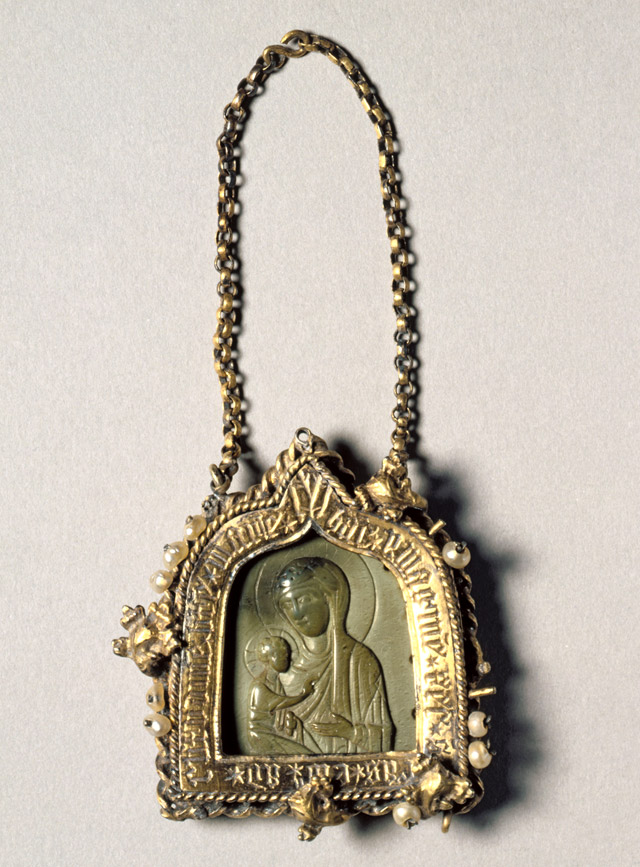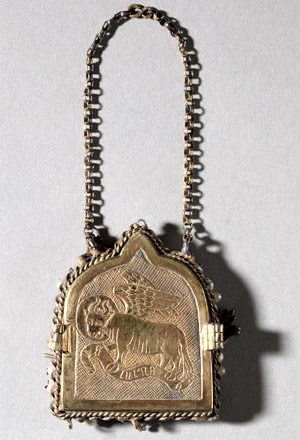Pendant Icon with the Virgin Dexiokratousa
The Cleveland Museum of Art, purchase from the J. H. Wade Fund

 Select the image to zoom
Select the image to zoom
Consisting of a Byzantine steatite icon of the Virgin and Child mounted in a Gothic ogee-shaped frame, this small pendant belonged to the treasury of Aachen Cathedral until 1804, when it was given to Empress Joséphine of France as a gift. By then, it was cherished for its association with Emperor Charlemagne (r. 800–814), who was believed to have worn it in battle. A related tradition, first attested during the early seventeenth century, claims that the pendant was one of three reliquaries found around Charlemagne's neck when the emperor's body was exhumed in 1166 following his canonization. The object, however, tells a different story. Dated to the twelfth century on the basis of its style and iconography, the pendant's steatite icon depicts the half-length figure of the Virgin holding the Christ Child on her right arm while pointing toward him with her left. Known as the Virgin Dexiokratousa—literally, "the one who holds with her right"—this icon type is a mirror image of the Virgin Hodegetria, the most famous miracle-working icon of Constantinople. Allegedly painted by St. Luke the Evangelist in Jerusalem, the Hodegetria icon was considered an authentic portrait of the Virgin and Child, and thus became one of the most widely copied icons of the Orthodox world. While it is unknown how the Dexiokratousa icon emerged, it is likely that it was through direct contact with the miracle-working prototype that this image type first gained currency in the Byzantine Empire.
While the steatite icon's purported association with Charlemagne and its discovery in his tomb must be considered a later invention, the pendant's status as a relic is confirmed by the framing inscription and engraved image of an ox—the symbol of St. Luke—on its silver-gilt frame. When the steatite icon was mounted, presumably during the mid-fourteenth century, the image was understood in its significance as an authentic portrait of the Virgin and Child painted by St. Luke, an image-relic of the highest order.





